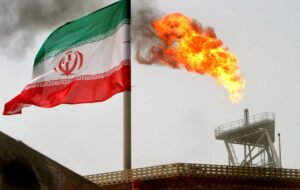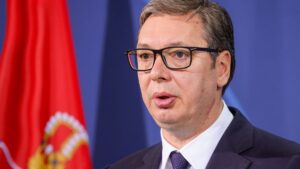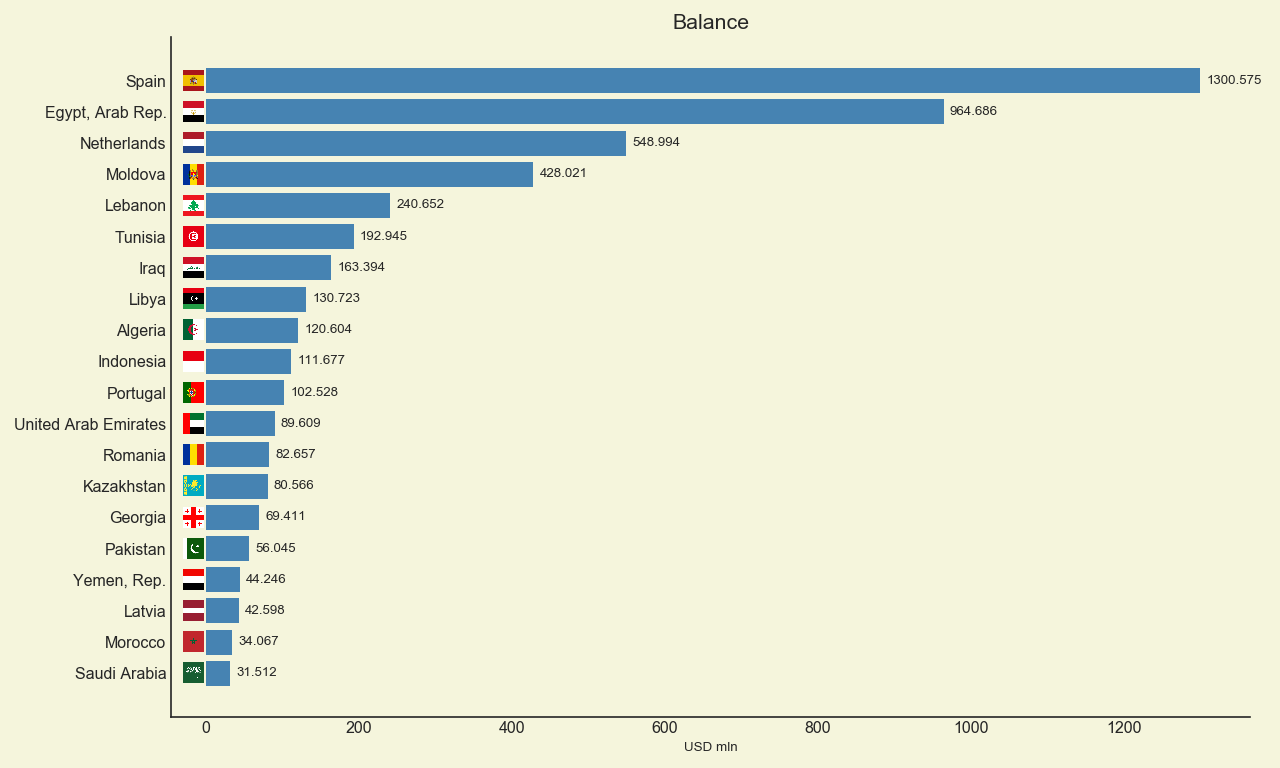
Farmers who purchased Ukrainian-made agricultural machinery and equipment in September 2024 will receive approximately UAH 150 million in compensation from the state, the Ministry of Economy reports on its website.
“We continue to support Ukrainian machine building. We have signed an order to allocate almost UAH 150 million as compensation for farmers who have bought new machinery and equipment made in Ukraine. Thus, we are stimulating demand for domestic products. The register currently includes 133 manufacturers and almost 11.8 thousand units of machinery and equipment. We hope that the number will increase,” said Yulia Svyrydenko, First Deputy Prime Minister and Minister of Economy.
The Ministry of Economy clarified that the funds will be transferred to 25 authorized banks based on buyers’ applications submitted in September. The largest amounts of compensation will be paid to buyers of machinery through PrivatBank (over UAH 52 million), Oschadbank (UAH 31.8 million) and ProCredit Bank (UAH 15 million).
In total, over UAH 395 million has been accrued to farmers since the program’s inception (including the current order), including UAH 220 thousand in April, UAH 18.6 million in May, UAH 66.4 million in June, UAH 61.5 million in July, UAH 98.5 million in August, and UAH 149.98 million in September.
More than 1700 farmers participated in the 2024 program and purchased Ukrainian machinery worth almost UAH 1.9 billion.
The largest number of applications for compensation for purchased agricultural machinery and equipment were submitted in the following regions: Odesa – 178, Kirovohrad – 170, Poltava – 157, Mykolaiv – 148, Cherkasy – 135, Vinnytsia – 120.
As reported, the state program to compensate farmers for the purchase of Ukrainian-made agricultural machinery and equipment is part of the Made in Ukraine policy. Farmers who have purchased machinery and equipment from the list on the Ministry of Economy’s website can receive compensation. To do this, they need to submit an application and documents confirming the purchase to an authorized bank.
Producers wishing to include their equipment in the list can contact the Ministry of Economy via the official e-mail address – meconomy@me.gov.ua. The application must be submitted in electronic form using an electronic signature or other means of identification that allow to establish the identity of the manager or authorized person.
The list of machinery and equipment is regularly updated after the localization of production is verified. The level of localization must exceed 60% (40-45% for tractors, combines, special equipment, etc.). The compliance of manufacturers is determined in accordance with the criteria specified in the Cabinet of Ministers’ Resolution No. 130 (as amended), the Ministry of Economy reminded.

Oil is losing 4.5% in price on Monday, as the market assesses news from the Middle East.
As reported, on the night of October 26, Israel launched a series of air strikes on Iranian military targets. The attack was Israel’s response to the strike on the country by Iranian forces on October 1.
The fact that Israel did not attack Iran’s oil facilities, as well as the smaller-than-expected scale of the attack in general, eased traders’ fears of a possible escalation of the conflict, Market Watch notes.
“Israel’s attack did not affect energy infrastructure and was limited in scope. This is likely to ease fears of a direct conflict with Iran,” said Jay Hatfield, CEO of Infrastructure Capital Advisors.
The cost of December futures for Brent on the London ICE Futures exchange as of 7:15 a.m. is $72.63 per barrel, which is $3.42 (4.5%) lower than at the close of the previous trading. On Friday, these contracts rose by $1.67 (2.3%) to $76.05 per barrel.
December futures for WTI in electronic trading on the New York Mercantile Exchange (NYMEX) fell by $3.34 (4.65%) to $68.44 per barrel. At the end of the previous session, the value of these contracts increased by $1.59 (2.3%) to $71.78 per barrel.
Price Futures Group analyst Phil Flynn notes, however, that the oil market’s concerns about the Middle East conflict will persist.
“The bottom line is that the immediate threat of oil supply disruptions from the region has passed. However, if you think this will put an end to the conflict, I don’t think so. Even if Iran doesn’t respond to this strike, I think it will try to make sure that its proxies regroup and respond one way or another,” the Market Watch expert said.

“Nova Poshta, a leading logistics operator in Ukraine, notes a fairly strong demand for its bonds from a wide range of investors: insurance companies, pension funds, investment funds, and banks, which allows it to successfully place them.
“We have about UAH 60 million in investments from pension funds. Some people may think that the pension fund market in Ukraine is not developed, but we see that it is,” said NOVA CFO Petro Fokov at the Ukrainian CFO Forum held in Kyiv on October 24-25.
He clarified that Nova Poshta is currently conducting private placements of bonds among institutional investors, which are specified in the prospectus, but individuals can also buy them on the secondary market.
“We do have individuals (bondholders), but there are not so many of them compared to banks, insurance and pension funds,” Fokov stated.
The Nova Group CFO noted that Nova Poshta is one of the leading issuers of hryvnia bonds in Ukraine and in January 2023 became the first issuer to resume issuing after the start of the full-scale Russian invasion.
According to him, the advantage of hryvnia bonds for the issuer is the absence of collateral, which is currently difficult to assess for bank loans.
“But they (the bonds) are more expensive and require a little more transparency, i.e., you need to disclose a little more information on the website, but they have their advantages,” Fokov added.
He noted that the Nova group, whose companies also include NovaPay Credit, likes to support the bond market with an interesting offer and feels responsible for ensuring that these are reliable and stable instruments. “And people trusted such instruments as corporate bonds more than government bonds,” the CFO said.
According to him, in general, the group, whose investments this year will double the investments of 2021 and amount to UAH 8.5 billion, also uses loans from international financial organizations and banks for debt financing.
Fokov specified that among the IFIs, the European Bank for Reconstruction and Development is the first, with which the group signed a loan for UAH 3 billion this year.
“We take out loans from the EBRD in hryvnia, in hryvnia, because we are a hryvnia company, we do not take unnecessary risks, we want to be sure that we can repay the loan, so we calculate everything,” he added.
As for bank lending, the CFO said that the group cooperates with 10 leading Ukrainian banks.
According to him, having so many partner banks, each of which has its own requirements, Nova follows a strategy of complete unification of covenants, taking the most developed system of financial covenants of the EBRD as a basis.
“It covers all issues, all points. That is why we offer all our partner banks, with whom we are additionally starting to cooperate, to simply join this system of covenants or choose some requirements from this menu, so to speak. But not to give any exotic new requirements. We have managed to do it so far,” Fokov said.
As reported, in August of this year, Nova Poshta announced the placement of an issue of interest-bearing unsecured bonds of the F series with a total nominal value of UAH 1 billion. The bonds will mature on June 10, 2026, bear an interest rate of 16% per annum, mature on June 5, 2026, and have a face value of UAH 1 thousand.
Nova Poshta registered a report on the placement of the previous E series issue of the same volume with a maturity date of August 8, 2025 and an interest rate of 17% per annum with the NSSMC on July 4 this year. Most of it, worth UAH 650 million, was purchased in May by Oschadbank (Kyiv). It was clarified that this is the third deal since 2019 for the state-owned bank to finance Nova Poshta by purchasing corporate bonds.
As of the middle of this year, Nova Poshta’s liabilities on E series bonds amounted to UAH 995.16 million, F series – UAH 994.88 million, and on previously issued D series bonds maturing at the end of January 2025 – UAH 818.51 million.
As of the end of June this year, Nova Poshta’s total liabilities on bonds amounted to UAH 2 billion 808.55 million, while its liabilities to banks amounted to UAH 3 billion 136.12 million, and the total amount of liabilities and collateral amounted to UAH 15 billion 562.04 billion.
In 2023, Nova Poshta made two bond issues – “C” and “D” – each with a nominal amount of UAH 800 million. The C series bonds were issued for a 12-month term with a 24% p.a. interest rate, while the D series bonds were issued for a 20-month term with a 23% p.a. interest rate.
Earlier, in February 2023, the company redeemed the UAH 700 million Series B bonds issued in March 2020.
In the first half of 2024, Nova Poshta LLC increased its unconsolidated net income by 20.1% to UAH 20.12 billion, but the company’s net profit increased by 20.1%.

Serbia will donate €8.4 million worth of generators and transformers to Ukraine as humanitarian aid, Serbian President Aleksandar Vucic said in an interview with Serbian TV channel Prva TV.
“We have collected generators and transformers worth 8.4 million euros for Ukraine,” the president said.
According to him, the new Serbian ambassador to Ukraine will hand over this aid.
Earlier, the Serbian government provided humanitarian aid to Ukraine in connection with the disaster in Kherson region that occurred after the explosion of the Kakhovka hydroelectric power plant.

Kredobank (Lviv) has signed an agreement with the U.S. Development Finance Corporation (DFC) to raise $40 million in guarantees for loans to small and medium-sized businesses in Ukraine.
According to the bank’s statement on Friday, the signing took place in Washington during the annual meetings of the International Monetary Fund and the World Bank Group, the guarantee will cover 80% of the loan amount, meaning that the agreement will allow Kredobank to issue $50 million in business loans.
It is specified that working capital loans, investment loans and leasing under the DFC guarantee will be available to companies operating throughout the government-controlled territory of Ukraine, with no more than 300 employees and no more than $15 million. The maximum loan amount for a client is $1.5 million in equivalent. As part of the program, at least 25% of all loans under DFC’s guarantees must be granted to agricultural enterprises.
Jakub Karnowski, First Deputy Chairman of the Management Board of Kredobank, noted that thanks to the risk-sharing programs that have been operating in the bank for more than two years, he managed to provide Ukrainian entrepreneurs with a total of more than EUR 155 million in loan financing.
Kredobank was founded in 1990. Its sole shareholder is the largest bank in Poland – PKO Bank Polski S.A. According to the National Bank of Ukraine, as of June 1, 2024, Kredobank ranked 14th (UAH 57.93 billion) among 63 banks in the country in terms of assets.
Geographical structure of Ukraine’s foreign trade (surplus) in Jan-July 2024, thousand USD

Open4Business.com.ua